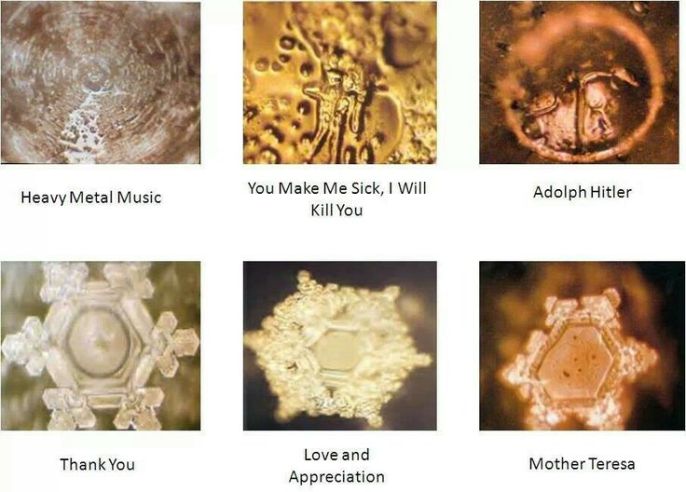Sticks and Stones Can Break Your Bones and so Can Words

Any type of illness has a biological, experiential, and social facet attached to it. It is society that ascribes meaning to a particular ailment. Even though there are many grassroots movements and governmental entities stipulating the contrary, some diagnoses carry a stigma influencing policies all the way down to the afflicted person’s self-image and worth (Conrad & Barker, 2010). Whether mental illness is biologically or socially constructed, the pained person, bears the burden of being unhealthy and different from the rest. All those who suffer from an illness, either known or told, seek out answers to their plight and relief. Under our current paradigm of relief, the medical model is the one most sought after and paid for by insurance companies. Once in the hospital or clinic, a doctor or psychiatrist diagnoses the pained person’s human affliction with a designated diagnosis (label) which changes that person’s behavior for a lifetime. Once diagnosed, social circumstances surrounding the affliction and illness are attached to the emotional and neurobiological state of the pained person allocating a personal meaning to the subjective experience (Freidson, 1970). Within the parameters of this paradigm, the words utilized to diagnose have an overall impact on the pained person’s intrinsic and social dimensions of the being.
According to social constructionists, illnesses, in this case mental illness, is subjectively experienced through the social connotation ascribed to that illness. Andrews (2012) states:
(T)hat our identity originates not from inside the person but from the social realm. Socialization takes place through significant others who mediate the objective reality of society, render it meaningful and in this way it is internalized by individuals…this is done through the medium of language.
According to the book “Words Can Change Your Brain”, by neuroscientist Dr. Andrew Newberg and Loyola Marymount communication professor Mark Robert Waldman state that our minds are hardwired to respond to words, speech, and intonation in an either positive or negative way. Neurobiological defense mechanisms are also activated by social language and behaviors.
The first one is the flight and fight system which activates the sympathetic nervous system and the second is a system of dissociation and immobilization which activates a pylogenetic vagal pathway. There are two vasa circuits involved, one is an ancient vagal circuit linked to defense and the other is an evolutionary newer circuit found in mammals associated with physiological states which create feelings of safety and social behavior. This environmental neurobiological response was first coined by Stephen Porges, as the Polyvagal Theory, which determines whether a person feels safe or threatened with another (Geller & Porges, 2014). Just as the flight/fight or social/trusting mechanism is activated through the words, intonation, and behavior of the other, conscious and unconscious intent of the other also plays a role on restructuring the biological and emotional state of the recipient. This implies that the pained person’s subjective experiential reality is based on the activated hardwired neurobiological makeup influenced by communal variables. Taking into account the biological aspect of socialization, I propose that an intended diagnosis has an emotional, physiological, and spiritual impact on the person.
Dr. Masaru Emoto, an Alternative Medicine doctor, studied and researched how human consciousness affects water. In his studies, when water was exposed to a certain word or music, then frozen, the formed crystals were photographed and analyzed. The water exposed to aesthetic words and music formed beautiful crystals; the water exposed to hurtful or negative words, formed misshapen and malformed crystals.
The following are some examples:

Diagnoses are Words
The current paradigm of illness is under the disease medical model. The main premise is, as Zigmond (2012) states,
The medical model assumes a simple mechanical view of illness and the body it occurs in. The illness is seen simply as a fault in the machine…Diagnosises therefore tend to be formulated in terms of structural or functional failures of the machine alone…it is generally succinct, tangible, easily understandable and in accordance with a scientific method which relies on objective and measurable observation…Most of us were never taught to use anything else..
As the medical model credits itself for having an authoritative knowledge of the human disease paradigm the subject-object communication and style used in the therapeutic encounter deters any relational depth with the pained other. By the clinician’s stoic clinical indoctrination into the scientific aspect of the pained person’s predicament, understanding of that pain shifts into pathologizing the other’s humanness. For example, upon observation, the clinician may say Alice is not group material because she is experiencing auditory hallucinations and is internally preoccupied. Alice, is not given a chance to thrive to a one-sided diagnostic observation. In utilizing the Polyvagal Theory to explain this communication style, this type of communication activates for many patients, the fight/flight mechanism. A clinician with a state of presence contributing to a relational construct of mutual wisdom and flow (Geller, 2013) would activate the opposite mechanism.
For some clinicians, diagnoses limits a deeper understanding of the pained person’s emotional, spiritual, and neurobiological presentation and self-determination to decide a treatment option. I once heard a clinician tell the group that they are not their given

diagnosis, that they are mentally ill in need of medication to feel better and integrate into the community. That clinician believed that the group members were indeed ill for he manifested it through his body language, intonation, and chosen language. Consequently, the group nodded since they were indoctrinated to believe that they are ill, thus, embodying that illness.
Nothing has changed from the historical Insane Asylums. It is time to change. This change starts with the clinician’s use of innocuous words combined with compassionate presence, and a belief that non ordinary states of consciousness are more common than the conformist tends to admit to. Along with a trusting belief that the pained other has the capability to empower in the best of his timely ability, the clinician embodies hope, patience, respect, and belief in the other. By the clinician having this emotional, physical, and spiritual stance the pained other feels safe, is more trusting, and willing to form a relationship to the best of his or her capability.
One such group of clinicians and fellow empowered voice hearers, is the Hearing Voices Network, (HVN). It was originally started in 1987 by Dr. Marius Rome, a Dutch psychiatrist, Sandra Escher, a science journalist, and Patsy Hage, a voice hearer. The network and movement became very successful, especially among psychiatric survivors, and spread to other countries around the world, including the United States. However, there is no HVN in Bergen County where the hospital I work is located. For more information about the HVN in a hospital setting please visit The Beginning of Hearing Voices Group in an Allopathic Hospital post.
References
Andrews, T. (n.d.). What is Social Constructionism? Retrieved February 05, 2017, from http://groundedtheoryreview.com/2012/06/01/what-is-social-constructionism/
Masaru emoto. (n.d.). Retrieved February 05, 2017, from http://www.masaru- emoto.net/english/water-crystal.html
Geller, S. M., & Porges, S. W. (2014). Therapeutic presence: Neurophysiological mechanisms mediating feeling safe in therapeutic relationships. Journal of Psychotherapy Integration, 24(3), 178-192. doi:10.1037/a0037511
Freidson, E. (1970). Profession of medicine: a study of the sociology of applied knowledge. New York: Harper Row.
Lucas, C. G. (2011). In case of spiritual emergency: moving successfully through your awakening. Forres, Scotland: Findhorn Press.
Newberg, A. B., & Waldman, M. R. (2012). Words can change your brain: 12 conversation strategies to build trust, resolve conflict, and increase intimacy. New York: Hudson Street Press.
Zigmond, D. The Medical Model its Limitations and Alternatives by David Zigmond. (n.d.). Retrieved February 05, 2017, from http://www.marco-learningsystems.com/pages/david-zigmond/medical-model.htm
Featured Image – https://ionizers.org/emoto.php

[…] Words Have Power […]
LikeLike